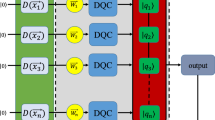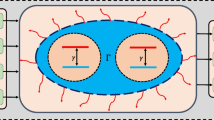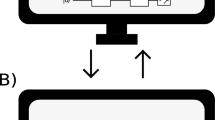Abstract
Entangled-state preparation and preservation are the cornerstones of any quantum information platform. However, the strongest adversaries in quantum information science are unwanted environmental effects such as decoherence and dissipation. Here, we address how to control and harness these unwanted effects that arise from the coupling of a system with its environment, to provide stationary entangled states for quantum machine learning (QML). To do so, we design a dissipative quantum channel, i.e., a two-qubit system interacting with a squeezed vacuum field reservoir, and study the output state of the channel by solving the corresponding master equation, especially, in the small squeezing regime. We show that the time-dependent output state of the channel is the so-called two-qubit X-states that generalize many families of entangled two-qubit states. Also, by considering a general Bell diagonal state as the initial state of the system, we reveal that this dissipative channel generates two well-known classes of entangled mixed state and Werner-like states in the steady-state regime. Moreover, this channel provides an efficient way to determine whether a given initial state results in a stationary entangled state or not. Finally, we examine the potential application of the designed two-qubit channel for QML. In this line, we propose a general theoretical scheme for quantum neural networks (QNNs) implemented with the variational quantum circuits, which encode data in continuous variables (CVs) of the two-qubit states. The linear (also referred to as affine) and nonlinear (activation function) transformations are enacted in the QNN using the stationary states of the two-qubit channel and measurement process, respectively. Finally, we proceed to test our proposed model by solving some supervised binary classification tasks. Integrating the non-unitary transformation and parallel-processed neural computing on such a two-qubit channel establishes the requirements for a meaningful QNN. Such a CV-QNN model with sufficient layers may execute any algorithm implementable on a universal CV quantum computer.









Similar content being viewed by others
Data availability
The datasets generated during and/or analyzed during the current study are available from the corresponding author on reasonable request.
References
Arute F, et al. (2019) Quantum supremacy using a programmable superconducting processor. Nature 574.7779:505–510
Bai S-Y, An J-H (2021) Generating stable spin squeezing by squeezed-reservoir engineering. Phys Rev Lett 127.8:083602
Baumgratz T, Cramer M, Plenio MB (2014) Quantifying coherence. Physical review letters 113.14:140401
Bausch J (2020) Recurrent quantum neural networks. Adv Neural Inf Process Syst 33:1368–1379
Benedetti M, Lloyd E, Sack S, Fiorentini M (2019) Parameterized quantum circuits as machine learning models. Quantum Science and Technology 4:043001
Bottou L (2010) Large-scale machine learning with stochastic gradient descent.. In: Proceedings of COMPSTAT’2010: 19th international conference on computational statistics, Paris France, August 22-27, 2010 keynote, invited and contributed papers. Physica-Verlag HD, pp 177–186
Breuer H-P, Petruccione F (2002) The theory of open quantum systems. Oxford University Press on Demand
Bub J. (2001) Quantum entanglement and information
Bukov M, et al. (2018) Reinforcement learning in different phases of quantum control. Phys Rev X 8.3:031086
Cai X-D, Wu D, Su Z-E, Chen M-C, Wang X-L, Li L, Liu N-L, Lu C-Y, Pan J-W (2015) Entanglement-based machine learning on a quantum computer. Phys Rev Lett 114:110504
Campagne-Ibarcq P, Eickbusch A, Touzard S, Zalys-Geller E, Frattini N, Sivak V, Reinhold P, Puri S, Shankar S, Schoelkopf R et al (2019) arXiv:1907.12487
Cao Y, Guerreschi GG, Aspuru-Guzik A (2017) Quantum neuron: an elementary building block for machine learning on quantum computers. arXiv:1711.11240
Cappelletti W, Erbanni R, Keller J (2020) Polyadic quantum classifier. In: 2020 IEEE International Conference on Quantum Computing and Engineering (QCE). IEEE, pp 22–29
Carleo G, Troyer M (2017) Solving the quantum many-body problem with artificial neural networks. Science 355:602
Chapman RJ, Ferrie C, Peruzzo A (2016) Experimental demonstration of selfguided quantum tomography. Phys Rev Lett 117:040402
Chen Y, et al. (2021) Detecting quantum entanglement with unsupervised learning. Quantum Science and Technology 7.1:015005
Chen SY-C, Yoo S (2021) Federated quantum machine learning. Entropy 23.4:460
Chitambar E, Gour G (2019) Quantum resource theories. Rev Mod Phys 91:025001
Choi M-D (1975) Completely positive linear maps on complex matrices. Linear Algebra and Its Applications 10:285
Clark S, Peng A, Gu M, Parkins S (2003) Unconditional preparation of entanglement between atoms in cascaded optical cavities. Phys Rev Lett 91:177901
Clerk AA et al (2010) Introduction to quantum noise, measurement, and amplification. Rev Mod Phys 82.2:1155
Deutsch D (1985) Quantum theory, the Church–Turing principle and the universal quantum computer. Proceedings of the Royal Society of London. A Mathematical and Physical Sciences 400:97
Deutsch DE (1989) Quantum computational networks. Proceedings of the Royal Society of London. A Mathematical and Physical Sciences 425:73
Drummond PD, Ficek Z, Spicek Z (2004) Quantum squeezing, vol 27. Springer Science & Business Media, Berlin
Dua D, Graff C (2017) UCI machine learning repository. http://archive.ics.uci.edu/ml
Duan L. -M., et al. (2000) Inseparability criterion for continuous variable systems. Phys Rev Lett 84.12:2722
Duan L-M, Kimble H (2003) Efficient engineering of multiatom entanglement through single-photon detections. Phys Rev Lett 90:253601
Ekert A, Jozsa R (1998) Quantum algorithms: entanglementenhanced information processing. Philosophical Transactions of the Royal Society of London. Series A Mathematical, Physical and Engineering Sciences 356:1769
Fu-Li L, Hong-Rong L (2004) An intuitive expression for inseparability condition of a two-mode squeezed vacuum state in a thermal environment. Chin Phys Lett 21:991
Gemme G, Grossi M, Ferraro D, Vallecorsa S, Sassetti M (2022) IBM quantum platforms: a quantum battery perspective. Batteries 8:43
Ghasemian E, Tavassoly M (2017) Quantum dynamics of a BEC interacting with a single-mode quantized eld under the inuence of a dissipation process: thermal and squeezed vacuum reservoirs. Laser Phys 27:095202
Ghasemian E, Tavassoly M (2021) Generation of Werner-like states via a two-qubit system plunged in a thermal reservoir and their application in solving binary classification problems. Sci Rep 11.1:1
Gupta S, Zia R (2001) Quantum neural networks. J Comput Syst Sci 63:355
Gurvits L (2003) Classical deterministic complexity of Edmonds’ problem and quantum entanglement. In: Proceedings of the thirty-fifth annual ACM symposium on Theory of computing, pp 10–19
Hanneke D, et al. (2010) Realization of a programmable two-qubit quantum processor. Nat Phys 6.1:13–16
Havlíček V, Córcoles AD, Temme K, Harrow AW, Kandala A, Chow JM, Gambetta JM (2019) Supervised learning with quantum-enhanced feature spaces. Nature 567:209
Hentschel A, Sanders BC (2010) Machine learning for precise quantum measurement. Phys Rev Lett 104:063603
Herbert N (2011) Quantum reality: Beyond the new physics. Anchor
Hernandez M, Orszag M (2008) Decoherence and disentanglement for two qubits in a common squeezed reservoir. Phys Rev A 78:042114
Hiesmayr BC (2021) Free versus bound entanglement, a NP-hard problem tackled by machine learning. Sci Rep 11.1:19739
Horodecki M, Horodecki P (1999) Reduction criterion of separability and limits for a class of distillation protocols. Phys Rev A 59.6:4206
Horodecki R (1996) Information-theoretic aspects of inseparability of mixed states. Phys Rev A 54.3:1838
Hur T, Kim L, Park DK (2022) Quantum convolutional neural network for classical data classification. Quantum Machine Intelligence 4.1:3
Ikram M, Li F. -l., Zubairy MS (2007) Disentanglement in a two-qubit system subjected to dissipation environments. Phys Rev A 75:062336
Ishizaka S, Hiroshima T (2000) Maximally entangled mixed states under nonlocal unitary operations in two qubits. Phys Rev A 62:022310
Jamiołkowski A (1972) Linear transformations which preserve trace and positive semideniteness of operators. Rep Math Phys 3:275
Ji Y-H, Liu Y-M (2013) Investigations into quantum correlation of coupled qubits in a squeezed vacuum reservoir. Chin Phys B 22.2:020305
Jordan TF (2009) .. In: Journal of Physics: Conference Series, vol 196 . IOP Publishing, p 012010
Joshi A, Hassan SS, Xiao M (2005) Controlling subluminal to superluminal behavior of group velocity with squeezed reservoir. Phys Rev A 72:055803
Jozsa R (1997) Entanglement and quantum computation. arXiv:9707034
Khrennikov A (2020) Quantum versus classical entanglement: eliminating the issue of quantum nonlocality. Found Phys 50.12:1762–1780
Killoran N, et al. (2019) Continuous-variable quantum neural networks. Physical Review Research 1.3:033063
Kingma DP, Ba J (2014) Adam: A method for stochastic optimization. arXiv:1412.6980
Kowalewska-Kudłaszyk A, Leoński W (2010) Squeezed vacuum reservoir effect for entanglement decay in the nonlinear quantum scissor system. Journal of Physics B. Atomic, molecular and optical physics 43:205503
Kraus B, et al. (2008) Preparation of entangled states by quantum Markov processes. Phys Rev A 78.4:042307
Krauter H, et al. (2011) Entanglement generated by dissipation and steady state entanglement of two macroscopic objects. Phys Rev Lett 107.8:080503
Levine Y, Yakira D, Cohen N, Shashua A (2017) Deep learning and quantum entanglement: Fundamental connections with implications to network design. arXiv:1704.01552
Lin Y, Gaebler J, Reiter F, Tan TR, Bowler R, Sørensen A, Leibfried D, Wineland DJ (2013) Dissipative production of a maximally entangled steady state of two quantum bits. Nature 504:415
Lin Y, Gaebler J, Reiter F, Tan TR, Bowler R, Sørensen A, Leibfried D, Wineland D, Collaboration N et al (2014) . APS March Meeting Abstracts 2014:M34–012
Lingaraju NB, et al. (2022) Bell state analyzer for spectrally distinct photons. Optica 9.3:280–283
Lloyd S, et al. (2020) Quantum embeddings for machine learning. arXiv:2001.03622
Lu S, Huang S, Li K, Li J, Chen J, Lu D, Ji Z, Shen Y, Zhou D, Zeng B (2018) Separability-entanglement classifier via machine learning. Phys Rev A 98:012315
Ma Y-C, Yung M-H (2018) Transforming Bells inequalities into state classifiers with machine learning. npj Quantum Information 4:1
MacKay DJ, Mac Kay DJ et al (2003) Information theory inference and learning algorithms. Cambridge University Press, Cambridge
Magesan E, Gambetta JM, Córcoles AD, Chow JM (2015) Machine learning for discriminating quantum measurement trajectories and improving readout. Phys Rev Lett 114:200501
Malouf R (2002) A comparison of algorithms for maximum entropy parameter estimation. COLING-02: The 6th conference on natural language learning 2002 (CoNLL-2002)
Mari A, Bromley TR, Izaac J, Schuld M, Killoran N (2020) Transfer learning in hybrid classical-quantum neural networks. Quantum 4:340
Memarzadeh L, Mancini S (2011) Stationary entanglement achievable by environment-induced chain links. Phys Rev A 83.4:042329
Mengoni R, Di Pierro A (2019) Kernel methods in quantum machine learning. Quantum Machine Intelligence 1.3-4:65–71
Michielsen K, Nocon M, Willsch D, Jin F, Lippert T, De Raedt H (2017) Benchmarking gate-based quantum computers. Comput Phys Commun 220:44
Mizel A, Lidar DA, Mitchell M (2007) Simple proof of equivalence between adiabatic quantum computation and the circuit model. Physical review letters 99:070502
Moll N, Barkoutsos P, Bishop LS, Chow JM, Cross A, Egger DJ, Filipp S, Fuhrer A, Gambetta JM, Ganzhorn M et al (2018) Quantum optimization using variational algorithms on near-term quantum devices. Quantum Science and Technology 3:030503
Narayanan A (1999) Quantum computing for beginners. In: Proceedings of the 1999 congress on evolutionary computation-CEC99 (Cat. No. 99TH8406), vol 3. IEEE
Nielsen MA, Chuang I (2002) Quantum computation and quantum information, 558–559. Published in the United States of America by Cambridge University Press, New York
Nielson MA, Chuang IL (2000) Quantum computation and quantum information. Published in the United States of America by Cambridge University Press, New York
Petit L, Eenink H, Russ M, Lawrie W, Hendrickx N, Philips S, Clarke J, Vandersypen L, Veldhorst M (2020) Universal quantum logic in hot silicon qubits. Nature 580.7803:355–359
Plenio MB, Huelga SF (2002) Entangled light from white noise. Phys Rev Lett 88.19:197901
Rabanal P, Rodríguez I, Rubio F (2007) Using river formation dynamics to design heuristic algorithms. In: International conference on unconventional computation. Springer, pp 163–177
Rabinovich MI, Varona P, Selverston AI, Abarbanel HD (2006) Dynamical principles in neuroscience. Rev Mod Phys 78:1213
Rau A (2000) Manipulating two-spin coherences and qubit pairs. Phys Rev A 61:032301
Rau A (2009) Algebraic characterization of X-states in quantum information. Journal of physics a: Mathematical and theoretical 42:412002
Scala F, et al. (2022) Quantum variational learning for entanglement witnessing. In: 2022 International Joint Conference on Neural Networks (IJCNN), Padua, Italy. https://doi.org/10.1109/IJCNN55064.2022.9892080, pp 1–8
Schlimgen AW et al (2021) Quantum simulation of open quantum systems using a unitary decomposition of operators. Phys Rev Lett 127.27:270503
Schuld M, et al. (2020) Circuit-centric quantum classifiers. Phys Rev A 101.3:032308
Schuld M, Killoran N (2019) Quantum machine learning in feature hilbert spaces. Physical review letters 122.4:040504
Schuld M, Sinayskiy I, Petruccione F (2014) The quest for a quantum neural network. Quantum Inf Process 13:2567
Scully MO, Zubairy MS (1999) Quantum optics
Shen Y, Harris NC, Skirlo S, Prabhu M, Baehr-Jones T, Hochberg M, Sun X, Zhao S, Larochelle H, Englund D et al (2017) Deep learning with coherent nanophotonic circuits. Nature photonics 11:441
Smart SE, Hu Z, Kais S, Mazziotti DA (2022) . Communications Physics 5:1
Takeda S, Furusawa A (2019) . APL Photonics 4:060902
Ticozzi F, Viola L (2012) Stabilizing entangled states with quasi-local quantum dynamical semigroups. Philosophical Transactions of the Royal Society A Mathematical, Physical and Engineering Sciences 370:5259
Touzard S, Kou A, Frattini N, Sivak V, Puri S, Grimm A, Frunzio L, Shankar S, Devoret M (2019) Gated conditional displacement readout of superconducting qubits. Phys Rev Lett 122: 080502
Verstraete F, Audenaert K, De Moor B (2001) Maximally entangled mixed states of two qubits. Phys Rev A 64.1:012316
Verstraete F, Wolf MM, Ignacio Cirac J (2009) Quantum computation and quantum-state engineering driven by dissipation. Nat Phys 5:633
Werner RF (1989) Quantum states with Einstein-Podolsky-Rosen correlations admitting a hiddenvariable model. Phys Rev A 40:4277
Wiseman HM, Milburn GJ (2009) Quantum measurement and control. Cambridge University Press
Wu S-X, Yu C-S (2017) The precision of parameter estimation for dephasing model under squeezed reservoir. Int J Theor Phys 56:1198
Yanay Y, Clerk AA (2018) Reservoir engineering of bosonic lattices using chiral symmetry and localized dissipation. Phys Rev A 98.4:043615
Yang M, et al. (2019) Experimental simultaneous learning of multiple nonclassical correlations. Phys Rev Lett 123.19:190401
Yang Z, Zhang X (2020) Entanglement-based quantum deep learning. New J Phys 22:033041
Yeo Y (2008) Local noise can enhance two-qubit teleportation. Phys Rev A 78:022334
Yu T, Eberly J (2004) Finite-time disentanglement via spontaneous emission. Phys Rev Lett 93:140404
Yu T, Eberly J (2006) Quantum open system theory: bipartite aspects. Phys Rev Lett 97:140403
Zak M, Williams CP (1998) Quantum neural nets. Int J Theor Phys 37:651
Zeytinoğlu S, İmamoġlu A, Huber S (2017) Engineering matter interactions using squeezed vacuum. Phys Rev X 7:021041
Zhang Y-S, et al. (2002) Experimental preparation of the Werner state via spontaneous parametric down-conversion. Phys Rev A 66.6:062315
Zhao B, Chen Z-B, Chen Y-A, Schmiedmayer J, Pan J-W (2007) Robust creation of entanglement between remote memory qubits. Phys Rev Lett 98.24:240502
Zippilli S, Vitali D (2021) Dissipative engineering of Gaussian entangled states in harmonic lattices with a single-site squeezed reservoir. Phys Rev Lett 126:020402
Zoufal C, Lucchi A, Woerner S (2021) Variational quantum Boltzmann machines. Quantum Machine Intelligence 3:1
Author information
Authors and Affiliations
Contributions
E. Gh is responsible for the inception of the project and its ongoing design and development.
Corresponding author
Ethics declarations
Ethics approval and consent to participate
Not applicable
Consent for publication
Not applicable
Human and animal ethics
Not applicable
Conflict of interest
The author declares no competing interests.
Additional information
Publisher’s note
Springer Nature remains neutral with regard to jurisdictional claims in published maps and institutional affiliations.
Appendix.: Dissipative dynamics of a two-qubit system
Appendix.: Dissipative dynamics of a two-qubit system
In order to solve the master equation (5), we assume the following initial state for the two-qubit system
The general solution of the master equation (5) is too cumbersome. However, for small squeezing r ≪ 1, the analytical expression of the density matrix of the two-qubit system at time t can be obtained as
where \(a=\frac {\Gamma }{2} \cosh ^{2}r\). Note that \(\rho _{ji}(t)= \rho _{ij}^{*}(t)\) and also ρ11(t) + ρ22(t) + ρ33(t) + ρ44(t) = 1.
Rights and permissions
Springer Nature or its licensor (e.g. a society or other partner) holds exclusive rights to this article under a publishing agreement with the author(s) or other rightsholder(s); author self-archiving of the accepted manuscript version of this article is solely governed by the terms of such publishing agreement and applicable law.
About this article
Cite this article
Ghasemian, E. Stationary states of a dissipative two-qubit quantum channel and their applications for quantum machine learning. Quantum Mach. Intell. 5, 13 (2023). https://doi.org/10.1007/s42484-023-00096-2
Received:
Accepted:
Published:
DOI: https://doi.org/10.1007/s42484-023-00096-2




